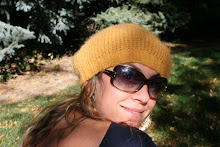What is line? Line is a basic element of art. They are everywhere you look and can be curved, straight, parallel, perpendicular, jagged, zigzag and more. Lines can denote movement or direction. They can define a space, express emotion or convey meaning. Lines seemed like a perfect starting point for our first week in the studio.
 Several interesting questions emerged in the first day. "How long can you make a line?", "How small can you make a line?", "Can you make a line into a shape?" and several interesting ideas resulted, "We could call a tree trimmer and make lines on trees.", "We could go outside the school and make lines up and down the sidewalks all around the school", "We could make lines on our fences or in the school." We look forward to pursuing some of these possibilities in the week ahead.
Several interesting questions emerged in the first day. "How long can you make a line?", "How small can you make a line?", "Can you make a line into a shape?" and several interesting ideas resulted, "We could call a tree trimmer and make lines on trees.", "We could go outside the school and make lines up and down the sidewalks all around the school", "We could make lines on our fences or in the school." We look forward to pursuing some of these possibilities in the week ahead. This student stumbled on positive and negative space and the art of "drawing something without drawing it". She worked for 25 minutes, drawing deliberate lines overlapping one another and creating a dark central "tent" image, while leaving a white space exposed to imply a door. Once this technique was pointed out, several nearby students became interested in "drawing without drawing" and an explosion of dark and light images evolved.
This student stumbled on positive and negative space and the art of "drawing something without drawing it". She worked for 25 minutes, drawing deliberate lines overlapping one another and creating a dark central "tent" image, while leaving a white space exposed to imply a door. Once this technique was pointed out, several nearby students became interested in "drawing without drawing" and an explosion of dark and light images evolved. Lines joined together create shapes. Many students made this discovery and relished in labeling one another's creations, "That is a square, it has four lines", "You drew a circle", "A circle is just one line!" and so on. Some of the older students discovered that lines are used to write letters and numerals, soon the canvas was covered with the symbols best known to each child present.
Lines joined together create shapes. Many students made this discovery and relished in labeling one another's creations, "That is a square, it has four lines", "You drew a circle", "A circle is just one line!" and so on. Some of the older students discovered that lines are used to write letters and numerals, soon the canvas was covered with the symbols best known to each child present. On Wednesday afternoon, we had a studio session devoted to the older, full day students. These students were asked to collect natural objects with provocative lines and bring them to the center of our drawing table. They then began drawing lines of interest on 6x6 inch white bristol board. Toward the end of our studio sessions two boys expressed an interest in using a color besides black. I said that we were only using the tools out on the table today (black felt tips, ball points and pencils).
On Wednesday afternoon, we had a studio session devoted to the older, full day students. These students were asked to collect natural objects with provocative lines and bring them to the center of our drawing table. They then began drawing lines of interest on 6x6 inch white bristol board. Toward the end of our studio sessions two boys expressed an interest in using a color besides black. I said that we were only using the tools out on the table today (black felt tips, ball points and pencils). 
Another boy eyed a large, muddy piece of bark, obviously noting the possibilities. He wiped a piece of mud onto his finger and then looked uncertainly at me. I smiled encouragingly and he rubbed the mud into his paper, successfully creating a rich brown. Thus began an exciting conversation between several boys. The result was some truly inspiring art, colored with verdant leafy greens and deep mud browns. They were very eager to pursue the implied possibilities of this discovery further.





Finally, we ended the week as "Nature Detectives". Each child was given a clipboard, a 6x6 in. piece of white paper and a choice of three writing tools (felt tip, ball point or pencil) and were encouraged to explore our outdoor environment in search of lines, recording their data on the white paper.
Here are a few of their findings:






No comments:
Post a Comment